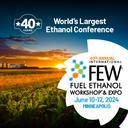DDGS intake reduces methane output of dairy cows
May 24, 2013
BY Holly Jessen
Not too long ago, I read a Dairy Herd Network story titled “Dried distillers grains are environmentally friendly.” The four-paragraphs drew me in and I decided to contact the researcher that conducted the study to get more information.
Chaouki Benchaar, a research scientist with Agriculture and Agri-Food Canada’s Dairy and Swine Research and Development Centre in Sherbrooke, Canada, told me that for the 4.6 month study dairy cattle were fed DDGS at increasing rates of 10 percent, 20 percent and 30 percent, while also decreasing corn and soybean meal intake. The basic conclusion was that the more DDGS the cows ate the less methane (or CH4) they produced. At the 30 percent DDGS level, methane production was decreased by 14 percent.
Advertisement
Advertisement
I just couldn’t help myself. I had to ask Benchaar exactly what it meant, methane production. Hey, I’m a reporter, I ask questions for a living. Turns out it’s not exactly what I was picturing. Cows produce methane in the rumen (or stomach) during feed digestion. That methane is emitted primarily during exhalation and eructation (belching.) Only 1 percent of the methane produced by cows is emitted via the rectum. (Science-speak for flatulence.)
OK, back to the serious stuff. The study also revealed another DDGS-related bonus. When the dairy cows were eating 30 percent DDGS milk production also increased by four kilograms per day. Overall dry matter intake also increased, which in layman’s terms means the cows ate more. Benchaar pointed out that corn is a costly energy source and soybean meal is a costly protein source. Adding in DDGS, which is a source of energy and protein, adds up to cost savings for livestock producers, he said, in addition to the benefits of decreased methane and increased milk production.
Advertisement
Advertisement
I wanted to know how big of a problem belching cows really are. Benchaar cited 2012 U.S. EPA numbers that showed that agricultural greenhouse gas emissions represented 6 percent (428 million of CO2 equivalent) of total U.S. emissions. In Canada, it was 8 percent (56 million tons of CO2 equivalent), according to 2012 numbers from Environment Canada. Enteric fermentation (relating to the intestines) contributes up to 33 percent of GHG emissions, mostly in the form of methane, while manure management contributes 12 to 16 percent in the form of nitrous oxide and methane. For further perspective, Benchaar told me that milk shake producers contribute a much smaller percentage of the methane emissions than burger makers. In other words, according to 2011 numbers from Environment Canada, dairy cows were responsible for 14 percent versus 78 percent from beef cattle. In the U.S. the numbers are 72 percent for beef cattle and 24 percent for dairy cattle.
If you’d like to read more about the study, the findings were published in the April 2013 issue of the Journal of Dairy Science. Funding came from Agriculture and Agri-Food Canada and the Dairy Farmers of Canada.
Related Stories
Ethanol Producer Magazine has announced the keynote speakers for the 2025 International Fuel Ethanol Workshop & Expo (FEW) being held June 9-11, 2025, at the CHI Health Center in Omaha, Nebraska. The general session will take place June 10.
Argent Energy, a leading European biofuels manufacturer, has officially launched Europe’s largest facility dedicated to producing biobased, technical-grade glycerin at its Port of Amsterdam site in the Netherlands.
Preliminary agenda released for 40th annual International Fuel Ethanol Workshop & Expo
Ethanol Producer Magazine announced this week the preliminary agenda for the 2024 International Fuel Ethanol Workshop & Expo (FEW) taking place June 10-12, 2024 at the Minneapolis Convention Center in Minneapolis, Minnesota.
A University of Alberta researcher has developed better ways to convert carbon dioxide, a harmful greenhouse gas, and glycerol, a leftover of biodiesel production, into value-added materials with wide-ranging uses including liquid hydrogen storage.
A group of some of the largest shrimp producers in Ecuador recently attended the Distillers Grains Technology Council's Distillers Symposium in Iowa with the USGC. The event provided an overview of the U.S. distillers’ industry.
Upcoming Events










